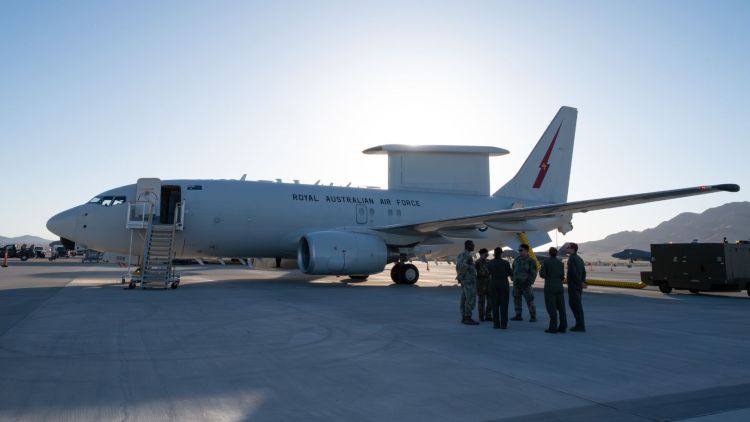The US Air Force has officially reached an agreement with Boeing to build the first rapid prototype of the E-7 battle management aircraft, a significant step toward modernizing America’s airborne warfare capabilities.
The announcement was made by Air Force Secretary Frank Kendall at the prestigious Royal International Air Tattoo air show over the weekend.
Evolving Technology in Air Surveillance
The E-7, a twin-engine Airborne Early Warning and Control System (AEW&C) aircraft has been selected to replace the aging fleet of the E-3 Sentry AEW&C, which has been in service for decades.
Both aircraft provide a crucial eye in the sky to forces on the ground, but of course, they have obvious differences, particularly in their technology.
The E-3, a veteran workhorse based on a Boeing 707, utilizes a large, rotating radar dome for 360-degree coverage. While powerful, this design adds weight and maintenance complexity. In contrast, the E-7, based on a modern Boeing 737 Next Generation aircraft, employs a fixed electronically scanned array radar. This offers similar coverage but is lighter, more fuel-efficient, and boasts a “stare” capability, allowing for focused tracking of specific targets.
E-3 Sentry (US Air Force)
The US Air Force has committed to acquiring 26 of these aircraft by 2032. As of February 2023, the initial deal was valued at $1.2 billion.
Negotiation Challenges and Solutions
The agreement concludes months of intense negotiations between the US Air Force and Boeing, which were primarily complicated by the service’s specific requirements for the aircraft.
These include enhanced satellite communications (SATCOM), military GPS capabilities, and heightened cybersecurity measures.
The complexity of these demands initially led to a significant increase in projected costs, sparking prolonged discussions to reach a financially viable agreement.
Secretary Kendall highlighted the critical role of Shay Assad, former Pentagon director of defense pricing, in brokering the deal.
Assad’s expertise was pivotal in achieving a “reasonable price point” for the prototype, Kendall told reporters Saturday (July 20).
Global Interest and Future Prospects
The E-7 is already operational in several countries, including Australia, where it is known as the Wedgetail.
With ongoing negotiations with the United Kingdom and other nations, the E-7 is poised to become a staple in NATO’s aerial fleet.
Andrew Hunter, the Air Force’s acquisition chief, emphasized the global market potential for the E-7 and praised Boeing and its suppliers for their efforts in reducing the prototype’s cost, Defense News reported.
“The critical design updates and overall structure enhancements of the mission systems will lay the foundation for a robust capability going forward,” Hunter said, underscoring the strategic importance of the E-7 in future military operations.
The US Air Force retired an E-3 from service for the first time on March 31, 2023, and announced in April 2022 that the E-7 would take over its predecessor’s role beginning in 2027.
RAAF’s E-7A Wedgetail (Wikimedia Commons)
Enhancing Air and Space Capabilities
The Air Force’s strategy involves integrating the E-7 fleet with space-based satellites to comprehensively monitor battlefields and airspace.
This dual-layer approach aims to ensure superior command, control, and targeting accuracy in military operations.
While the new E-7s are being rolled out, the Air Force plans to maintain some of its AEW&C fleet to bridge any capability gaps and ensure continuous support for its global surveillance and operational needs.
This deal not only signifies a substantial upgrade in the US military’s surveillance and command capabilities but also marks a key step in the broader modernization of defense technology aligning with future warfare requirements.
—
Disclaimer: SOFREP utilizes AI for image generation and article research. Occasionally, it’s like handing a chimpanzee the keys to your liquor cabinet. It’s not always perfect and if a mistake is made, we own up to it full stop. In a world where information comes at us in tidal waves, it is an important tool that helps us sift through the brass for live rounds.



